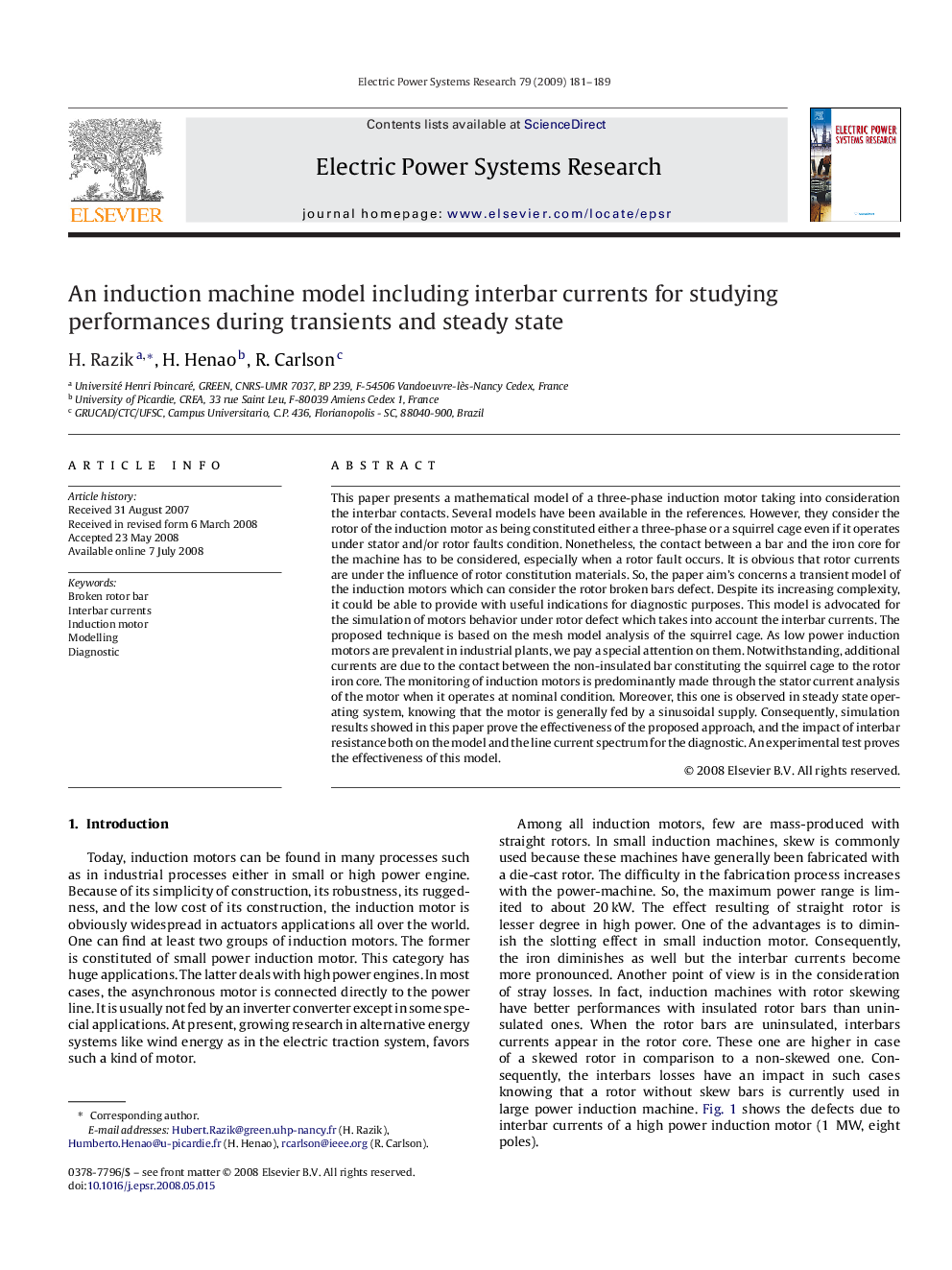| Article ID | Journal | Published Year | Pages | File Type |
|---|---|---|---|---|
| 704166 | Electric Power Systems Research | 2009 | 9 Pages |
This paper presents a mathematical model of a three-phase induction motor taking into consideration the interbar contacts. Several models have been available in the references. However, they consider the rotor of the induction motor as being constituted either a three-phase or a squirrel cage even if it operates under stator and/or rotor faults condition. Nonetheless, the contact between a bar and the iron core for the machine has to be considered, especially when a rotor fault occurs. It is obvious that rotor currents are under the influence of rotor constitution materials. So, the paper aim’s concerns a transient model of the induction motors which can consider the rotor broken bars defect. Despite its increasing complexity, it could be able to provide with useful indications for diagnostic purposes. This model is advocated for the simulation of motors behavior under rotor defect which takes into account the interbar currents. The proposed technique is based on the mesh model analysis of the squirrel cage. As low power induction motors are prevalent in industrial plants, we pay a special attention on them. Notwithstanding, additional currents are due to the contact between the non-insulated bar constituting the squirrel cage to the rotor iron core. The monitoring of induction motors is predominantly made through the stator current analysis of the motor when it operates at nominal condition. Moreover, this one is observed in steady state operating system, knowing that the motor is generally fed by a sinusoidal supply. Consequently, simulation results showed in this paper prove the effectiveness of the proposed approach, and the impact of interbar resistance both on the model and the line current spectrum for the diagnostic. An experimental test proves the effectiveness of this model.
